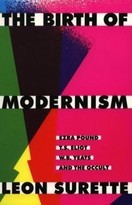Leon Surette offers a radical revision of our understanding of high modernism. Acknowledging that current post modern and theoretical critiques have provoked fresh examination of the high culture of the first half of this century, Surette rejects their characterization of modernism as positivistic and absolutist, despite the statements in the 1920s of modernists such as Pound, Eliot, and Joyce. He also rejects the diametrically opposed New Critical view of modernism as sceptical and relativistic. Through an explanation of both familiar and little-known theoretical writings of the late-19th and early-20th century, the work of Friedrich Nietzsche receives particular attention. Surette develops a portrait of modernism that demonstrates its continuity with American transcendentalism, French symbolism, and English aestheticism. His account is in many ways, a revival of an early view of modernism as the heir of symbolism, but Surette documents, for the first time, the origins of modernist aesthetics in the occult.Yeats’ occultism has long been acknowledged, but this is the first study to show that Pound’s early intimacy with Yeats was based largely on a shared interest in the occult sciences, and that Pound’s epic of the modern age, The Cantos”
Birth of Modernism, The: Ezra Pound, T.S. Eliot, W.B. Yeats, and the Occult
$25.00
Sold Out
Additional Information
| Author | Surette, Leon |
|---|---|
| Publisher | Mcgill-Queens University Press |
| Year Published | 1994 |
| Binding Type | Softcover |
|---|
